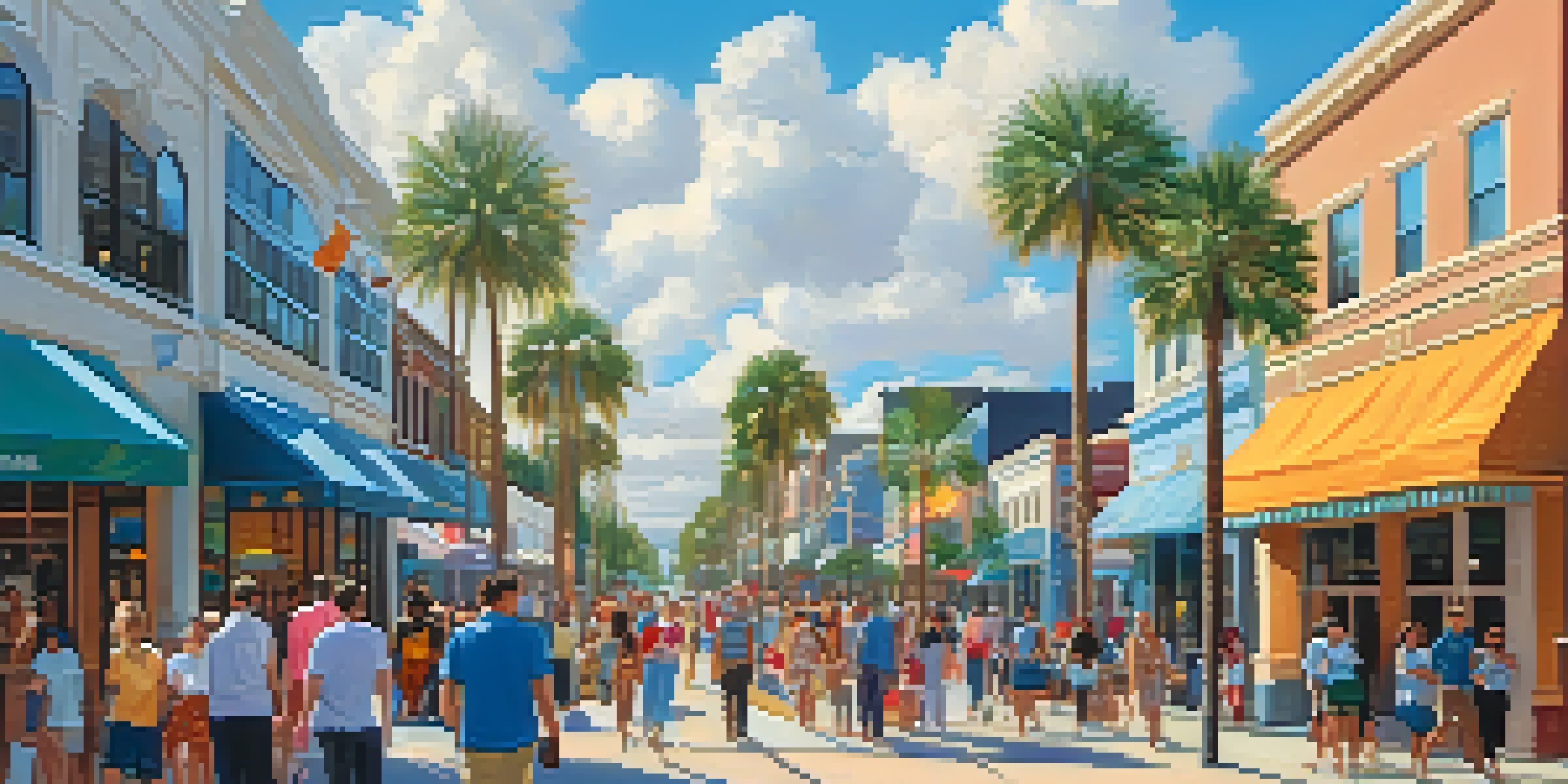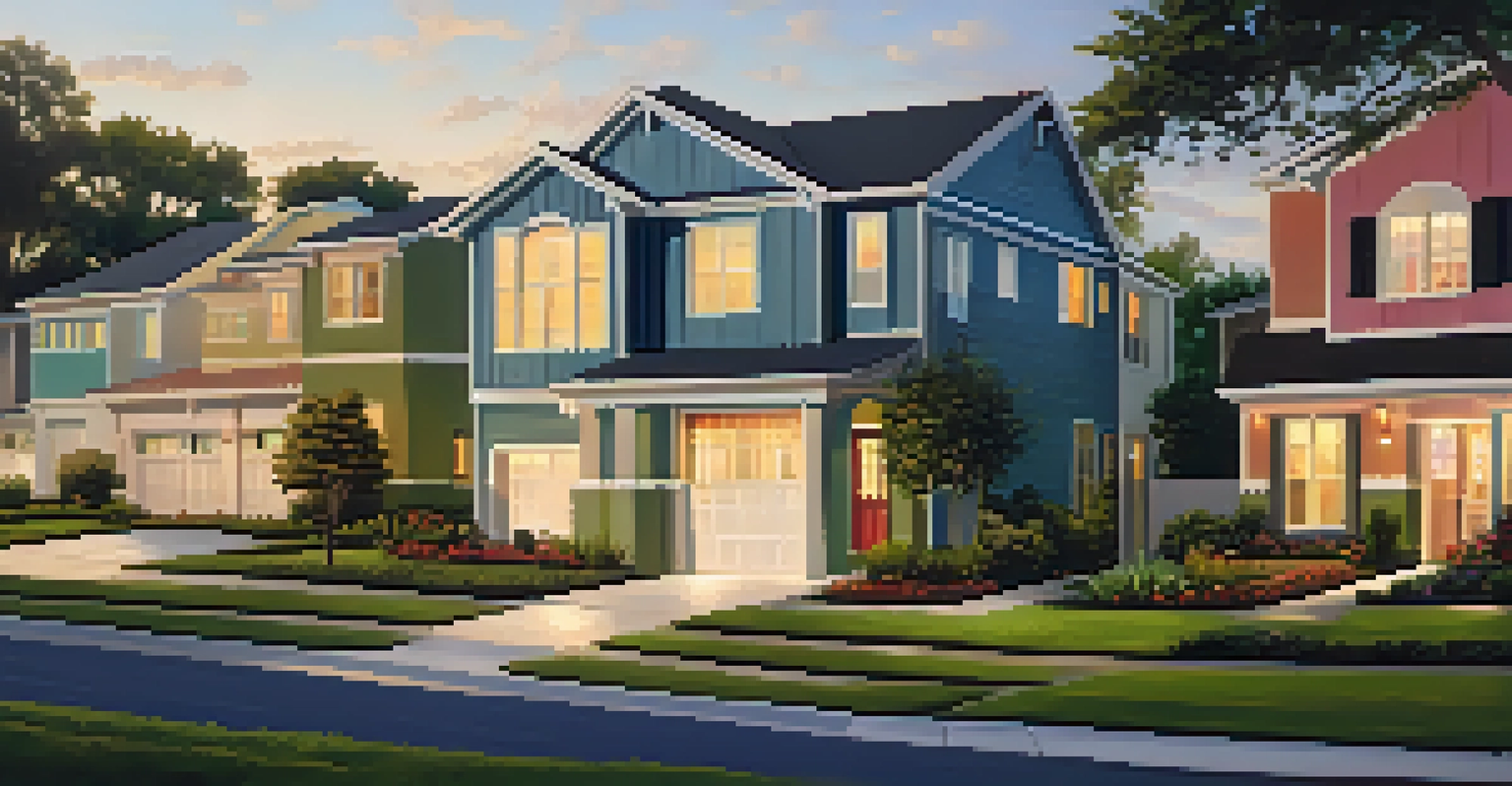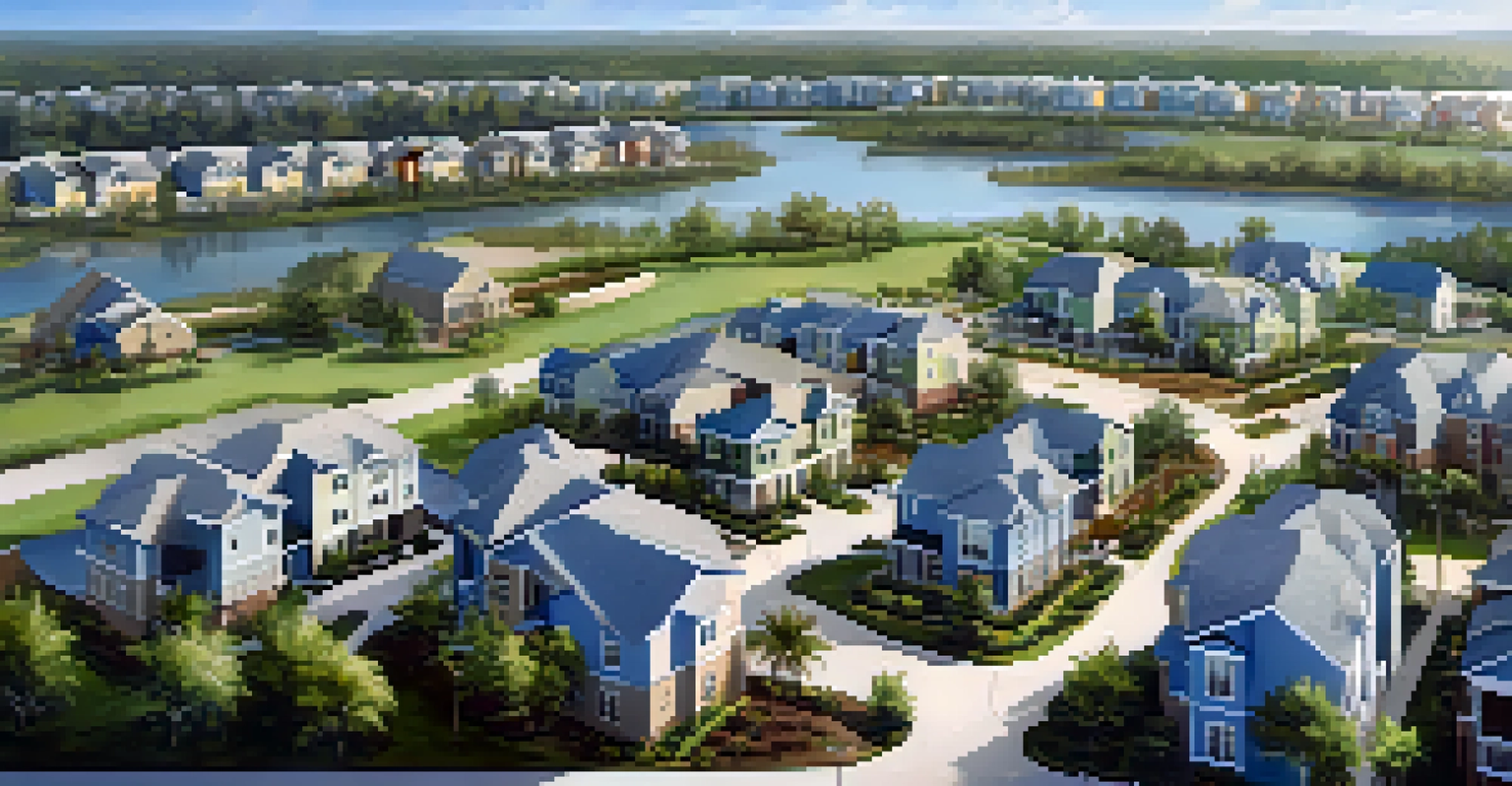Impact of Population Growth on Orlando's Real Estate Market

Understanding Orlando's Population Growth Trends
Orlando has seen significant population growth over the past decade, largely due to its appealing climate and job opportunities. The allure of a vibrant lifestyle and the promise of a thriving economy have attracted individuals and families alike. As more people move to the city, it becomes essential to explore how this influx shapes the local real estate market.
The future belongs to those who believe in the beauty of their dreams.
In 2020 alone, Orlando's population was estimated at over 300,000, and this number continues to rise. This growth can be attributed to various factors, including the city's expanding tourism sector and the tech industry's emergence. With each new resident, the demand for housing intensifies, leading to a notable shift in the real estate landscape.
Understanding the demographics behind this growth is crucial. Young professionals, retirees, and families are all contributing to a diverse community, each with distinct housing needs. Whether it’s single-family homes or upscale condos, Orlando's real estate market must adapt to cater to these varying requirements.
Impact on Housing Demand and Supply
As Orlando's population swells, the demand for housing inevitably increases. More residents mean more competition for available homes, leading to rising prices and a tightening rental market. This surge in demand can make it challenging for first-time homebuyers to find affordable options, often pushing them to consider outlying areas.

On the flip side, the heightened demand encourages developers to ramp up construction efforts. New housing projects and developments spring up as builders respond to the market's needs. However, the speed of construction must match the pace of population growth, or else supply issues may arise, impacting affordability.
Population Growth Drives Housing Demand
Orlando's rapid population increase intensifies competition for housing, resulting in higher prices and a shifting real estate landscape.
Moreover, this increased demand can lead to gentrification in certain neighborhoods. As property values rise, long-term residents may find it difficult to keep up with rising costs, which can alter the community's character. Balancing development with maintaining community integrity becomes a crucial focus for city planners.
Effects on Rental Prices in Orlando
With the population growth, rental prices in Orlando have experienced a significant uptick. The limited availability of rental units combined with the increasing demand has created a competitive market for renters. Many are finding themselves in bidding wars, especially in desirable neighborhoods, which can drive prices even higher.
The best way to predict the future is to create it.
For landlords, the influx of new residents can be a boon, as they can often charge premium rates for their properties. However, this also raises questions about housing affordability for renters, particularly those in lower-income brackets. Striking a balance between profitability for landlords and fair pricing for tenants becomes essential.
Additionally, the rise in rental prices can push some individuals and families to seek housing further from the city center. Suburban areas may see an increase in demand as renters search for more affordable options, which can lead to shifts in community dynamics and commuting patterns.
The Role of Infrastructure in Real Estate Growth
As Orlando's population grows, the need for robust infrastructure becomes increasingly important. Roads, public transport, schools, and healthcare facilities must be developed alongside housing to support the burgeoning population. A well-planned infrastructure can enhance the overall appeal of neighborhoods and attract more residents.
Without adequate infrastructure, the challenges of overcrowding can quickly emerge. Traffic congestion, strained public services, and limited access to amenities can detract from the quality of life, making certain areas less desirable for potential homebuyers. This creates a delicate balance that city planners must navigate as they work to accommodate growth.
Infrastructure is Key to Growth
Robust infrastructure development is essential to support Orlando's expanding population and maintain the quality of life for residents.
Investments in infrastructure not only benefit current residents but also bolster the real estate market. Areas with strong public services and transportation options often see higher property values. Therefore, strategic planning is essential for ensuring Orlando remains an attractive destination for newcomers.
Influence of Employment Opportunities on Real Estate
Orlando's job market plays a crucial role in its real estate dynamics. As new companies establish their presence, particularly in tech and healthcare, the area becomes a magnet for job seekers, further fueling population growth. This influx of workers drives demand for housing, as employees seek proximity to their workplaces.
However, the types of jobs available also influence the kind of housing that is in demand. Higher-paying positions may lead to a need for more upscale housing options, while lower-wage jobs could increase demand for affordable rentals. Understanding these trends helps developers and investors make informed decisions about future projects.
Moreover, the stability of the job market can impact real estate investment decisions. A robust employment sector can lead to confidence in the housing market, encouraging buyers to invest. Conversely, economic downturns can create hesitancy, resulting in fluctuations in property values.
The Shift in Buyer Preferences Amid Growth
As Orlando's population evolves, so do the preferences of homebuyers. Many are now seeking features that reflect a modern lifestyle, such as home offices, outdoor spaces, and smart home technology. This shift highlights the need for developers to adapt their offerings to meet changing buyer needs.
Additionally, there is a growing interest in sustainable living options. Eco-friendly homes and developments that prioritize green spaces are becoming increasingly popular among environmentally conscious buyers. This shift not only influences the types of properties being developed but also impacts the overall appeal of certain neighborhoods.
Employment Opportunities Shape Market
The evolution of Orlando's job market influences housing demand, with higher-paying jobs pushing the need for upscale options and affordable rentals.
Understanding these emerging preferences is crucial for real estate agents and developers alike. Those who can anticipate and cater to these trends will likely find success in a competitive market, ensuring that Orlando remains a vibrant and desirable place to live.
Looking Ahead: The Future of Orlando's Real Estate Market
The future of Orlando's real estate market is closely tied to its population growth trajectory. As more people continue to flock to the city, the market will need to adapt, balancing demand with sustainable development practices. This adaptation will be key to maintaining affordability and quality of life for residents.
Urban planners and developers will play a vital role in shaping this future. By focusing on sustainable growth, enhancing infrastructure, and considering community needs, they can create a thriving environment that attracts newcomers while preserving the essence of existing neighborhoods. Collaboration between city officials, developers, and residents will be crucial.

Ultimately, the impact of population growth on Orlando's real estate market presents both challenges and opportunities. By understanding these dynamics, stakeholders can navigate the evolving landscape and ensure a bright future for this vibrant city.